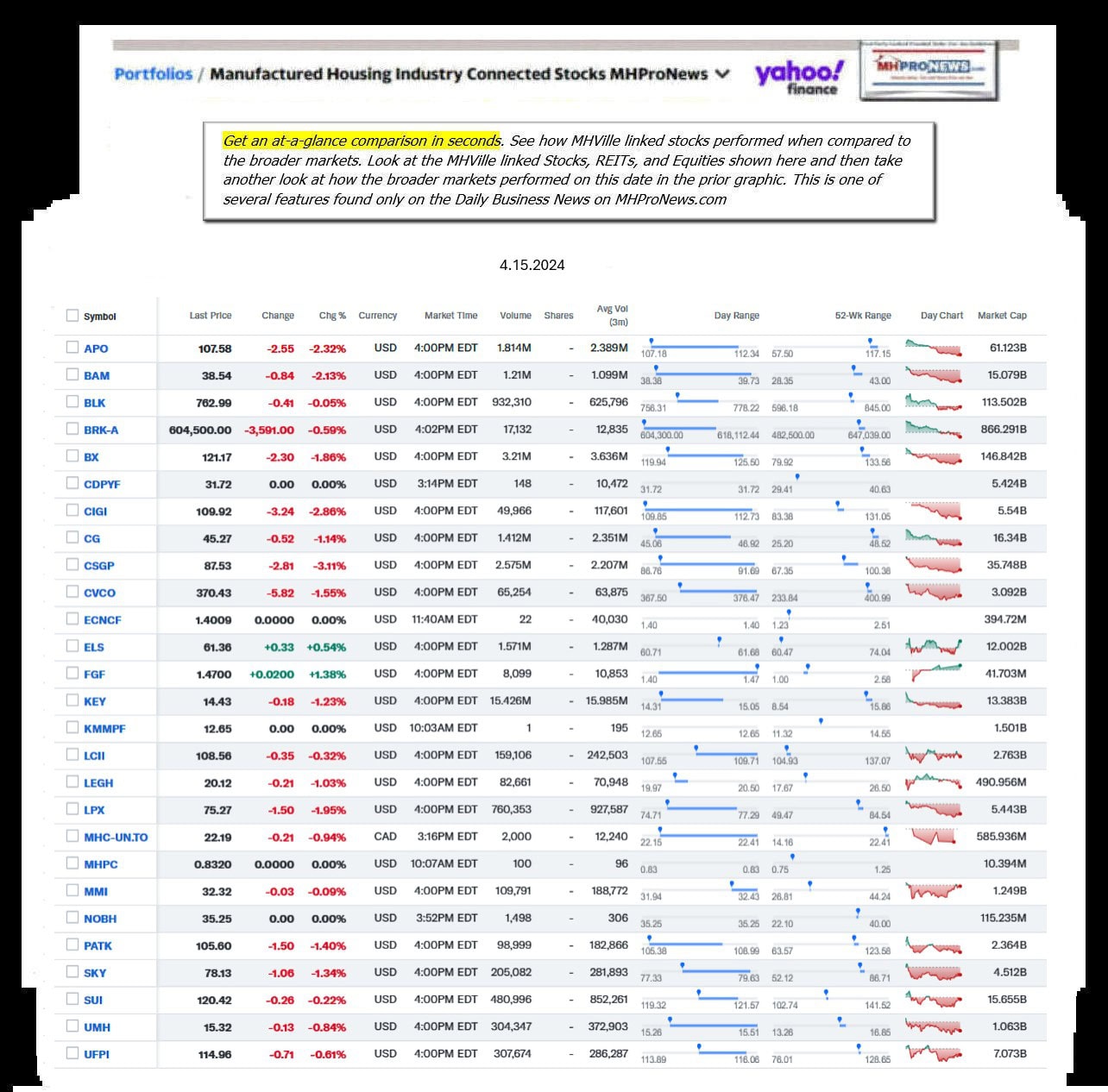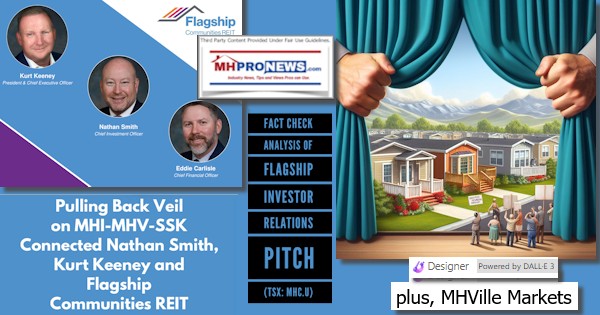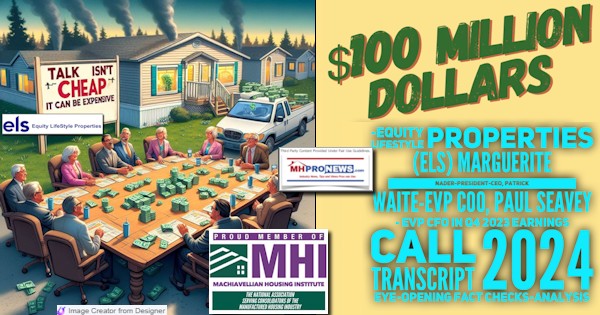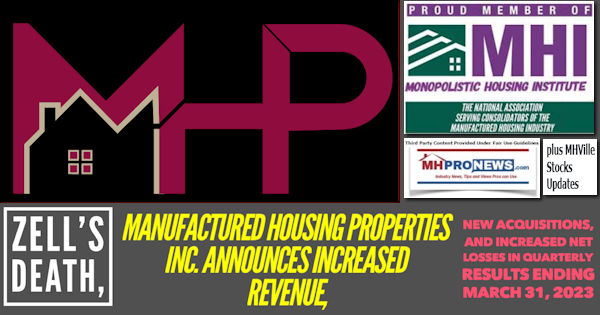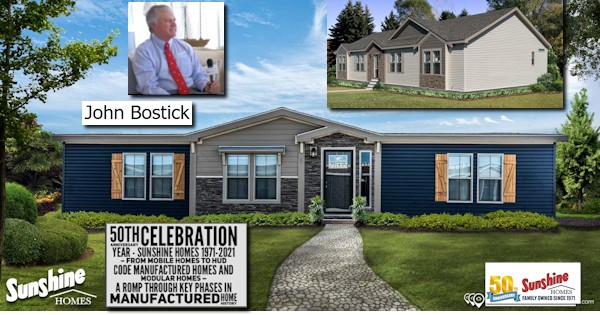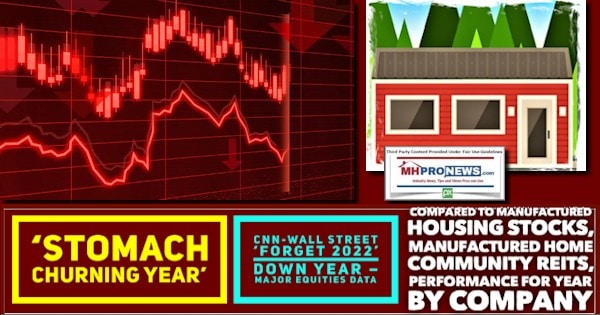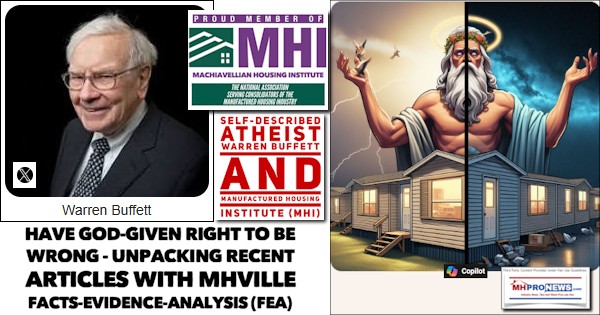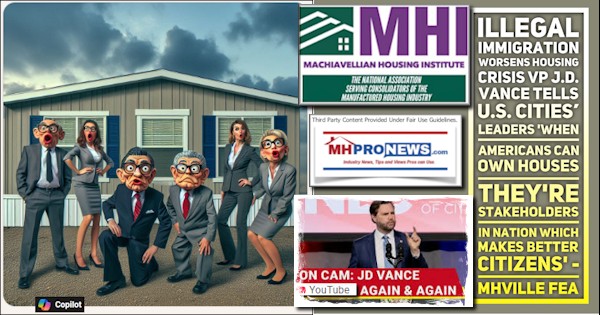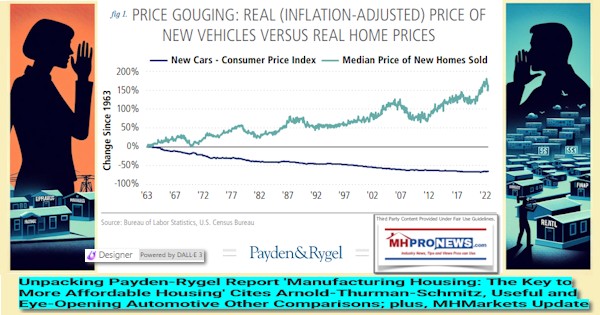
Under the subheading “INDEPENDENCE” the Payden & Rygel website asserts that: “Payden & Rygel is one of the largest independent asset managers. 100% of the company is owned by senior portfolio managers and executives involved in the day-to-day direction of the firm. This “true” independence provides our clients with a high level of customization and access to our resources.” On 4.16.2024 the bullets below are their self-proclaimed highlights. Payden and Rygel or “Payden.com” published a manufactured housing industry report during the Biden-era entitled: “Manufacturing Housing: The Key to More Affordable Housing.”
| Payden & Rygel at a Glance | |||||
|
|
|
|||
According to Payden & Rygel: “House prices are at all-time highs, stretching affordability for millions of Americans. Yet, factory-built homes, commonly called “manufactured housing,” offer the most straightforward path to more affordable housing for millions of people. So what’s holding “manufactured” housing back?”
In other words, Payden and Rygel independent asset managers have explored the manufactured home industry, producing a document linked here whose text and key figures (graphics) are shown in Part I below. Part II provides additional information with more MHProNews analysis and commentary. Part III is our Daily Business News on MHProNews MHVille linked equities and markets report.
Part I = per Payden & Rygel, “Manufacturing Housing: The Key to More Affordable Housing”

Depending on how busy they are and the vagaries months to complete the build. Your neighbors stop by each morning as they walk their dogs, sipping coffee and gazing in amazement as your car goes from a metal frame to a shiny, freshly painted Toyota Camry before their eyes.
Absurd, right? Why would the car company ship the materials and send an army of highly-skilled workers to construct the car in your driveway?
Yet we see this spectacle every day in new home construction. The onsite home building process is so routine that we don’t give it a second thought as we drive past housing developments dotted with the 2” x 4” pieces of lumber that typify a new residential dwelling project.
Let’s face it: the new home construction process is anachronistic. Consequently, we bear the costs of vastly more expensive housing. Virtually every other consumer product has been industrialized—mass-produced in factories—and inflation-adjusted prices have fallen dramatically over time. Not so for housing (see Figure 1). So, what’s holding factory-built housing back? We are our own worst enemy in the battle for more affordable living.
IT’S NOT ALL BAD
First, before we anger your contractor or the home builder in your stock portfolio, we must admit that home construction has progressed by leaps and bounds in recent decades. As a result, homebuilders ship many components to the construction site pre-fabricated.
What’s more, a new home in 2022 is a far cry from a new home in, say, 1973. In the U.S., homes are bigger—2,485 square feet today versus just 1,660 square feet in yesteryear.1 Homes are more energy-efficient. They are decked out with better appliances. More homes have pools. Heating and A/C are now necessities, not luxuries. Ninety-six percent of new homes have A/C compared to just 49% in 1973. In many ways, comparing a new home in 2022 to an existing one built in 1973 is apples to oranges.
Ok, so far, we’ve been quite charitable. Now we will be less so.
Only 10% of homes are “factory-built” (See Figure 2 on page 2). “On-site” construction accounts for most houses, with 92% of homes built on wood frames. Weather distorts construction activity in parts of the country.
Productivity in single-family home construction has stagnated for decades. Output per hour in single-family construction rose just 10% from 1987 to 2016, or 0.033% annually.2 As a consequence, it takes forever to build a new home. Ok, not forever, but official data from the Census Bureau shows that in 2021 it took 12.1 months to custom-build a single-family home from the first shovel breaking ground to the owner walking in.

Five decades ago, it took “just” 7.2 months.3
The lack of progress in home construction hinders the overall economy as well. Requiring more resources at higher prices to build a home, housing investment and services continue to make up 15-18% of GDP, whereas a maturing, more efficient industry falls as a share of total output in a healthy economy, freeing up resources to be used elsewhere.6
It’s no surprise then that housing is expensive. So what’s the alternative, you wonder? Our take: manufacturing housing.
MAKING HOUSING CHEAP AGAIN
We can almost hear the reader’s groans. When people hear “manufactured housing,” they immediately think of “mobile homes,” “trailer parks,” and, well, “trailer trash.”4
But, put aside your biases for a moment. Manufactured homes are “built entirely in the factory, transported to the site, and installed under a federal building code administered by the U.S. Department of Housing and Urban Development (HUD).”
Since 1976, the Federal Manufactured Home Construction and Safety Standards (commonly known as the HUD Code) “have overseen manufactured housing design and construction,
strength and durability, transportability, fire resistance, energy efficiency, and quality. The HUD Code also sets performance standards for the heating, plumbing, air conditioning, thermal and electrical systems.” So newer manufactured homes are not necessarily less safe, less durable, or less equipped than site-built alternatives.
Moreover, manufactured homes are cheaper— and in some cases far more affordable—than the stick-built single-family dwellings that likely dot your community. According to the Manufactured Housing Survey, a new manufactured home, including installation, cost $66.97 per square foot in 2021 compared to $143.83 for site-built units (see Figure 3 on page 2).5
Housing experts have been calling for more productive and cheaper production for decades. Back in 1937, the chief engineer of the Federal Housing Administration, A.C. Shire, weighed in, saying, “in an age of large-scale financing, power, and mass production, we have the anachronism that the oldest and one of the largest of our industries, concerned with the production of one of the three essentials of life… follows practices developed in the days of handwork…is bogged down by waste and inefficiency, [and] is unable to benefit by advancing productive techniques in other fields.”

He continued, “Unlike other widely used commodities, shelter is not made in a factory or plant organized for its production…”
Decades later, in 1970, the cover story of the American Legion Magazine asked, “Why Can’t People Get Homes?” In this article, L.A. Knight discussed how returning Vietnam veterans had
difficulty finding housing. Knight wrote, “It almost seems silly to explain that mass production to standard specifications in a factory is the key to producing any goods, including houses, at prices far below what hand labor at the customer’s site can meet. Housing is about the only common product that has escaped the industrial revolution and still hews to basic procedures that are 400 years old.”
If factory-built housing presents a good option, what’s holding it back? Two key factors: financing and zoning restrictions.
FINANCED OUT
The eagle-eyed reader viewing Figure 2 (above) will no doubt notice the steep plunge in manufactured housing shipments as a share of total singlefamily home production beginning around 1970.
What happened? In 1968, the U.S. Department of Housing and Urban Development (HUD) introduced a series of programs that subsidized the construction of stick-built housing (but not factory-built housing). One famous program, the so-called “Section 235,” provided mortgages at interest rates as low as one percent for buyers purchasing a home built on-site. Buyers of factory-built homes, specifically manufactured homes, were not eligible. These subsidies shifted demand to inefficient technology, the stick-built technology, and away from factory homes.
Further, manufactured homes are not classified as real property but as “personal property,” making them ineligible for mortgage loans. Instead, buyers financing the purchase of manufactured homes take out “chattel loans” at higher rates and shorter maturities than government-subsidized, 30-year fixed-rate mortgages available to site-built homes (e.g., 1970 saw the birth of Freddie Mac).
ZONED OUT
Building methods are one thing, but even if you can build efficiently, you can’t build anywhere and make it easy for buyers to finance purchases, so you may still have a problem. Unfortunately, local policymakers are so clueless on the housing front that it is difficult to take them seriously. Zoning is enough to put most readers to sleep, so we’ll provide a quick summary: zoning ordinances implemented across the country restrict what can be built and where. In the U.S., apartments are banned in at least 70% of residential areas of major cities and typically higher in the suburbs if allowed at all. For example, in San Jose, one of America’s least affordable cities, 94% of residential areas restrict construction to detached single family homes only.7
No wonder shelter is pricey!
Manufactured housing is even more challenging to build than apartments. As a result, zoning often bans factory-built homes outright, confines them to “housing parks,” or restricts them by requiring builders to apply for expensive conditional use permits.
We get it. Local officials, like aspiring homeowners, want spacious single-family homes with large kitchens, backyards, garages, and gardens (so do your authors!). But, in effect, local zoning ordinances put a floor under house prices in cities. By disallowing small apartments, mobile homes, manufactured homes, and the like, “zoning has merely locked out everyone who cannot clear that floor.”8
“WHY WE HAVE A HOUSING MESS”
In 1947, Thurman Arnold, who had been President Roosevelt’s Assistant Attorney General for Antitrust, and the namesake for the Arnold Simons model of monopoly, the predecessor of
the Cournot model mentioned above, wrote an article in Look magazine called “Why We Have A Housing Mess.”
Arnold asked, “Why can’t we have houses like Fords? For a long time, we have heard about the mass production of marvelously efficient post-war dream houses, all manufactured in one place and distributed like Fords. Yet nothing is happening. The low-cost mass production house has bogged down. Why? The answer is this: When Henry Ford went into the automobile business, he had only one organization to fight [an organization with a patent] . . . But when a Henry Ford of housing tries to get into the market with a dream house for the future, he doesn’t find just one organization blocking him. Lined up against him are a staggering series of restraints and private protective tariffs.”9

Since 1947, staunch interests have been lined up against progress in housing. Our contention is NOT that everyone should live in a trailer or a flimsy, cheaply built mobile abode. Instead,
we want to burst the notion of what constitutes housing production (i.e., only expensive, single-family dwellings far afield from areas of commerce). Doing so could unleash untold
possibilities about what can be built, how quickly, by whom, and where.
So, are you serious about making housing more affordable?
ENDNOTES
1. “Characteristics of New Housing.” United States Census Bureau, Accessed September 14, 2022.
2. Leo Sveikauskas, Samuel Rowe, James D. Mildenberger, Jennifer Price, and Arthur Young, “Measuring productivity growth in construction,” Monthly Labor Review, U.S. Bureau of Labor Statistics, January 2018, https://doi.org/10.21916/mlr.2018.1
3. “Average Length of Time from Authorization to Start.” New Residential Construction, U.S. Census Bureau, https://www.census.gov/construction/nrc/pdf/
avg_starttocomp.pdf.
4. While “manufactured” housing can’t shake the mobile home stigma, other factory-built options may. For example, modular housing is factory built but does not arrive on a chassis. Same for panel-built options.
5. “Manufactured Housing Survey.” Cost & Size Comparisons: New Manufactured Homes and New Single-Family Site-Built Homes, 2014-2021. U.S. Census Bureau
6.“Housing’s Contribution to Gross Domestic Product.” NAHB. Accessed September 14, 2022.
7. M. Nolan Gray. “Arbitrary Lines: How Zoning Broke The America City And How To Fix It.” Washington: Island Press Books, 2022.
8. Gray, 57.
9. James A. Schmitz, Jr. “Solving the Housing Crisis Will Require Fighting Monopolies in Construction.” Federal Reserve Bank of Minneapolis. Accessed September 14, 2022. …”
Part II – Additional Information with More MHProNews Analysis and Commentary
The above was part of a Payden and Rygel perspective on issues affecting global financial markets. It was the first of four subjects they explored in Q3 2022. Let’s start with the good in their report on manufactured housing linked here and provided for analysis above. In no particular order of importance, the following observations on the Payden and Rygel report quoted above are the following observations.
1) While there are some oversights and areas that could have been improved, our editorial position would be that this Payden perspective on manufactured housing was overall well written, organized, and expressed. For instance, the use of the image of building a car or other vehicle in a driveway is a useful analogy to make the point about how common sense it should be for housing to be built in a factory. They tied that back with their report by showing how inflation adjusted autos are not as costly as conventional housing has become. The image of building a car in a driveway is an analogy that MHLivingNews and MHProNews have used numerous times. On this date there are two pages of links to articles with the word “driveway.” MHProNews has four pages of articles that used the word “driveway.” Good for them. On this date, the Manufactured Housing Institute (MHI) uses the term “driveways” only once, and not in the same analogous manner as Payden and Rygel did. Where is MHI on pitching manufactured housing as cleverly as outsiders looking in Payden Ryden did?

2) The connection between a lack of manufactured housing and zoning/financing barriers isn’t new, but it is appropriate. Because it is unresolved, it absolutely should be routinely addressed. The Manufactured Housing Association for Regulatory Reform (MHARR) has made the point repeatedly as a producer’s organization, recently in a report linked here. MHI has made the point too, as a production- and post-production or umbrella-style trade group, which MHI claims to be when they say they represent “all segments” of manufactured housing. MHProNews notes that others have hit those themes that Payden did, see the reports linked below.
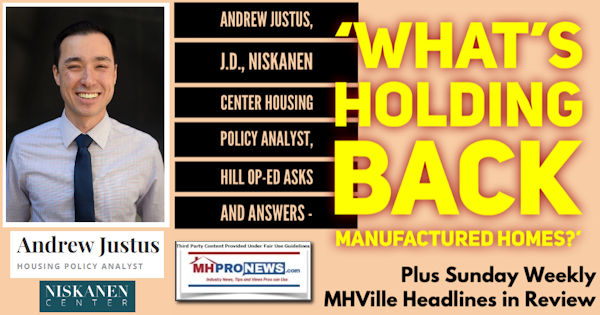
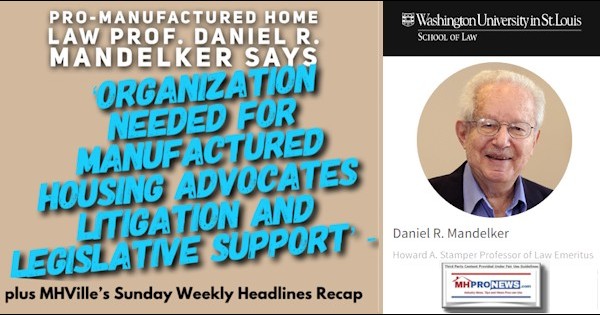
3) Payden and Rygel took on in a pithy fashion the image issue too. “But, put aside your biases for a moment.” “We can almost hear the reader’s groans. When people hear “manufactured housing,” they immediately think of “mobile homes,” “trailer parks,” and, well, “trailer trash.”4 Sad that it is still an issue. But nicely done.
4) Put at least four out of five stars next to this: “Since 1947, staunch interests have been lined up against progress in housing.” Among the sources cited (footnote 9)
- James A. Schmitz, Jr. “Solving the Housing Crisis Will Require Fighting Monopolies in Construction.”
Other than MHProNews/MHLivingNews, how many in manufactured housing have cited Schmitz?
Periodic checks of rival trade publishers, bloggers and MHI revealed that only MHProNews and MHLivingNews has cited the research by Schmitz that Payden and Rygel did.
- That’s despite the fact that MHI CEO Lesli Gooch presented at a Freddie Mac Symposium where James A. “Jim” Schmitz, Jr. argument on monopolistic forces limiting manufactured housing was presented.
- Or when this writer for MHProNews presented Schmitz and his Minneapolis Federal Reserve colleague’s analysis as part of the remarks presented to the Federal Housing Finance Agency (FHFA) “Listening Session” that Gooch also presented at. Gooch and MHI are not ignorant of the issue, because MHI leaders have been directly asked to address it. Their standard reply has been silence.
There is more good in the Payden report on manufactured housing, but that’s sufficient to illustrate that it brings much good to the table. That noted, let’s pivot to what was missed or could have been better.
5) As the footnote (#4) for the image issue, it said: “While “manufactured” housing can’t shake the mobile home stigma, other factory-built options may. For example, modular housing is factory built but does not arrive on a chassis. Same for panel-built options.” The problem is not so much that manufactured housing can’t shake the stigma. It is that MHI, quite well aware of the stigma, has failed to implement its own researched plan. What became the Roper Report was launched some 20 years ago. About 19 years ago, MHI proudly told the industry about what Roper revealed and how improving the industry’s image could increase acceptance, sales, and production.
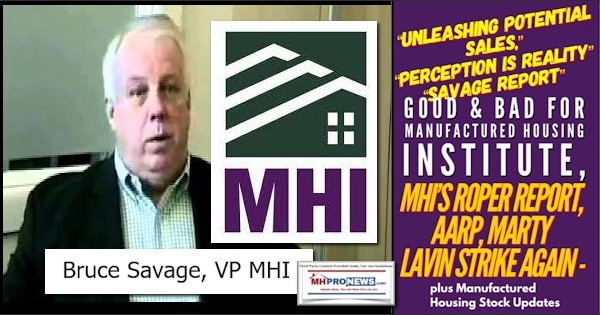
Also on the image issue, Kevin Clayton said that “the industry” – a periodically used term by MHI members like himself that is often used to mean MHI – was ‘ready’ to do an image campaign. Over a dozen years have elapsed since Clayton said that on a video-recorded conversation with transcript shown and linked below. That noted, it would take a deeper dive by Payden or others to find and explain those facts.

6) Also in fairness, Payden and Rygel never mentioned any association, according to an MS Word search of their manufactured housing perspective. Also not mentioned were the following terms, per a WORD search:
- “Manufactured Housing Improvement Act of 2000.”
- “Enhanced preemption.”
- “Duty to Serve” or DTS.
7) They could have used more footnotes and sources.
8) While more both pro-or con could be noted, overall, the Payden and Rygel report is miles ahead of several reports on the subject of manufactured housing published in the past decade, including by some of those in the MHI-orbit within manufactured housing. By pointing to the Schmitz research on the need for antitrust, and pointedly saying: “staunch interests have been lined up against progress in housing.” They have hit a key reason why manufactured housing is underperforming during an affordable housing crisis. Like MHProNews/MHLivingNews, they revealed that the market share of manufactured housing has declined in the 21st century (see graphic below).
Additionally, their closing question is an apt one.
- “Doing so could unleash untold possibilities about what can be built, how quickly, by whom, and where. So, are you serious about making housing more affordable?”
Overall, their research is commendable. MHProNews/MHLivingNews may return to their research themes at a future date. More on the topics they raised are covered in the reports linked below.
Note: to expand this image below to a larger or full size, see the instructions
below the graphic below or click the image and follow the prompts.
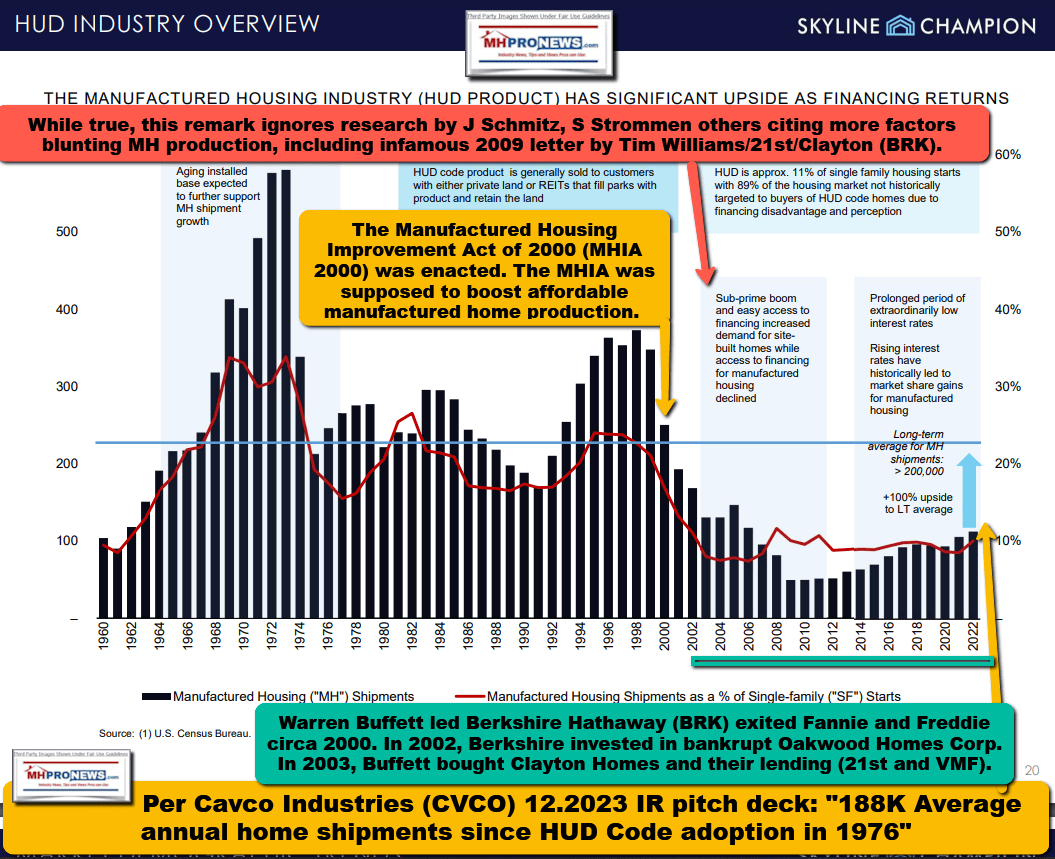
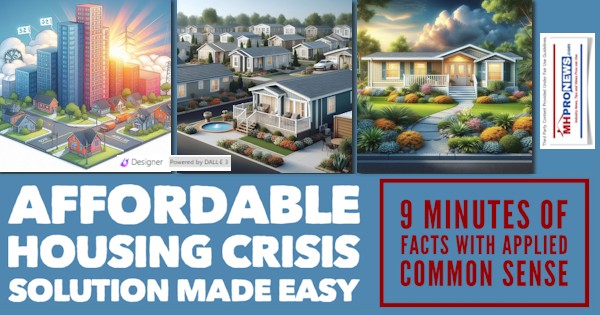
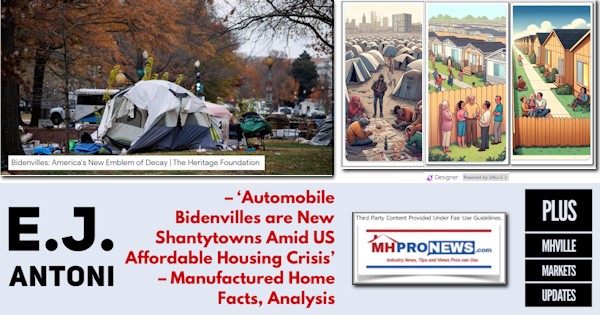
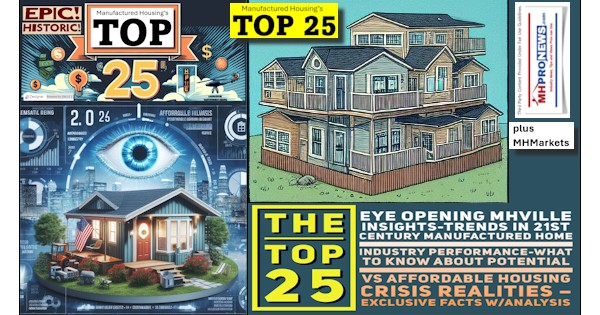
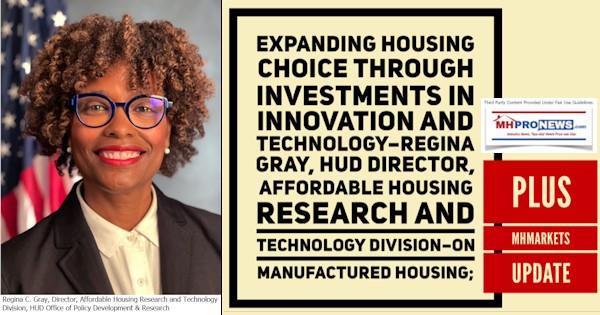
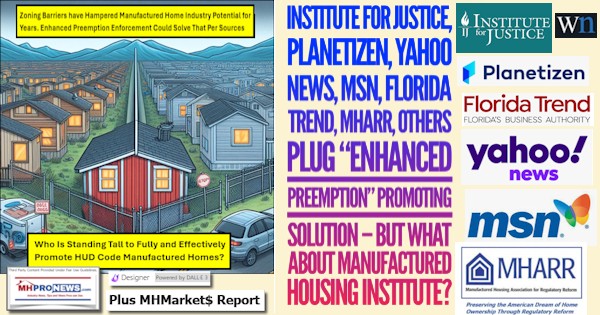
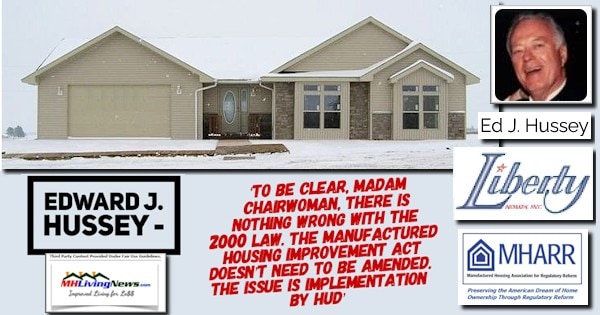
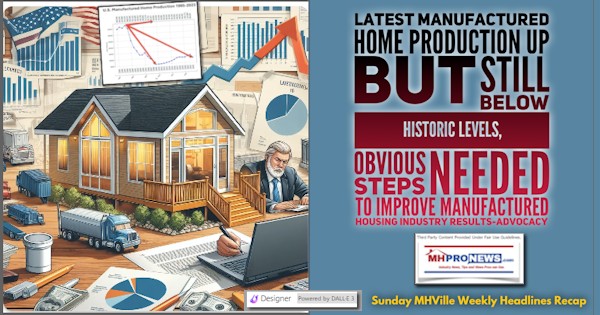

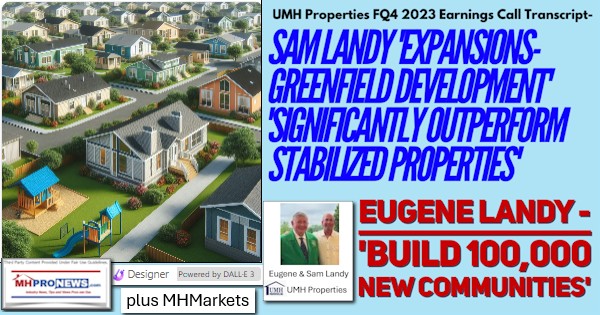
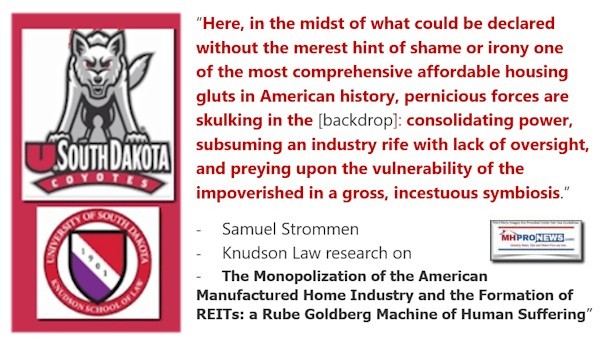
Part III – is our Daily Business News on MHProNews stock market recap which features our business-daily at-a-glance update of over 2 dozen manufactured housing industry stocks.
This segment of the Daily Business News on MHProNews is the recap of yesterday evening’s market report, so that investors can see at glance the type of topics may have influenced other investors. Thus, our format includes our signature left (CNN Business) and right (Newsmax) ‘market moving’ headlines.
The macro market moves graphics below provide context and comparisons for those invested in or tracking manufactured housing connected equities. Meaning, you can see ‘at a glance’ how manufactured housing connected firms do compared to other segments of the broader equities market.
In minutes a day readers can get a good sense of significant or major events while keeping up with the trends that may be impacting manufactured housing connected investing.
Headlines from left-of-center CNN Business – 4.15.2024
- An error kept this capture function from performing, MHProNews regrets the glitch.
